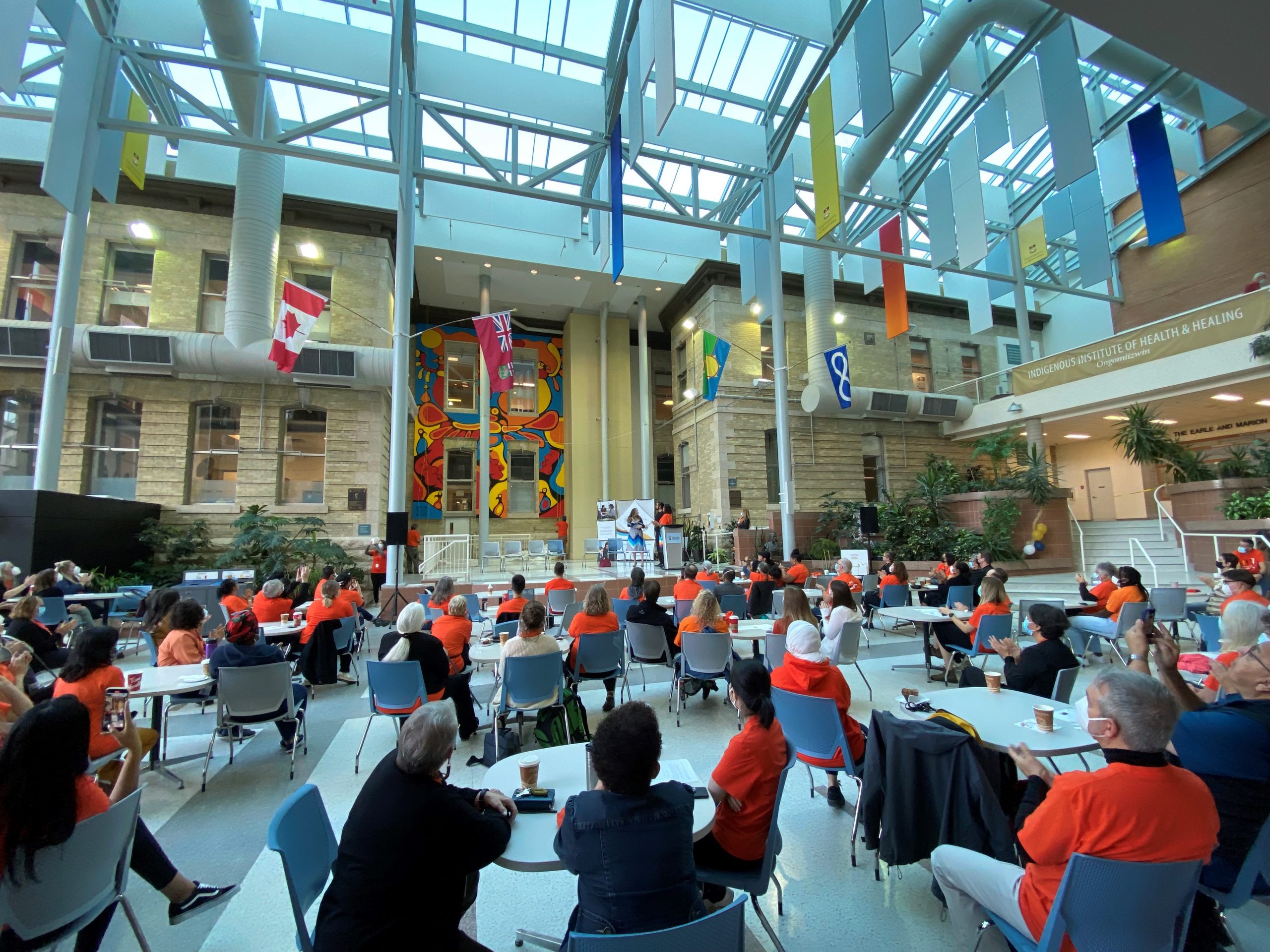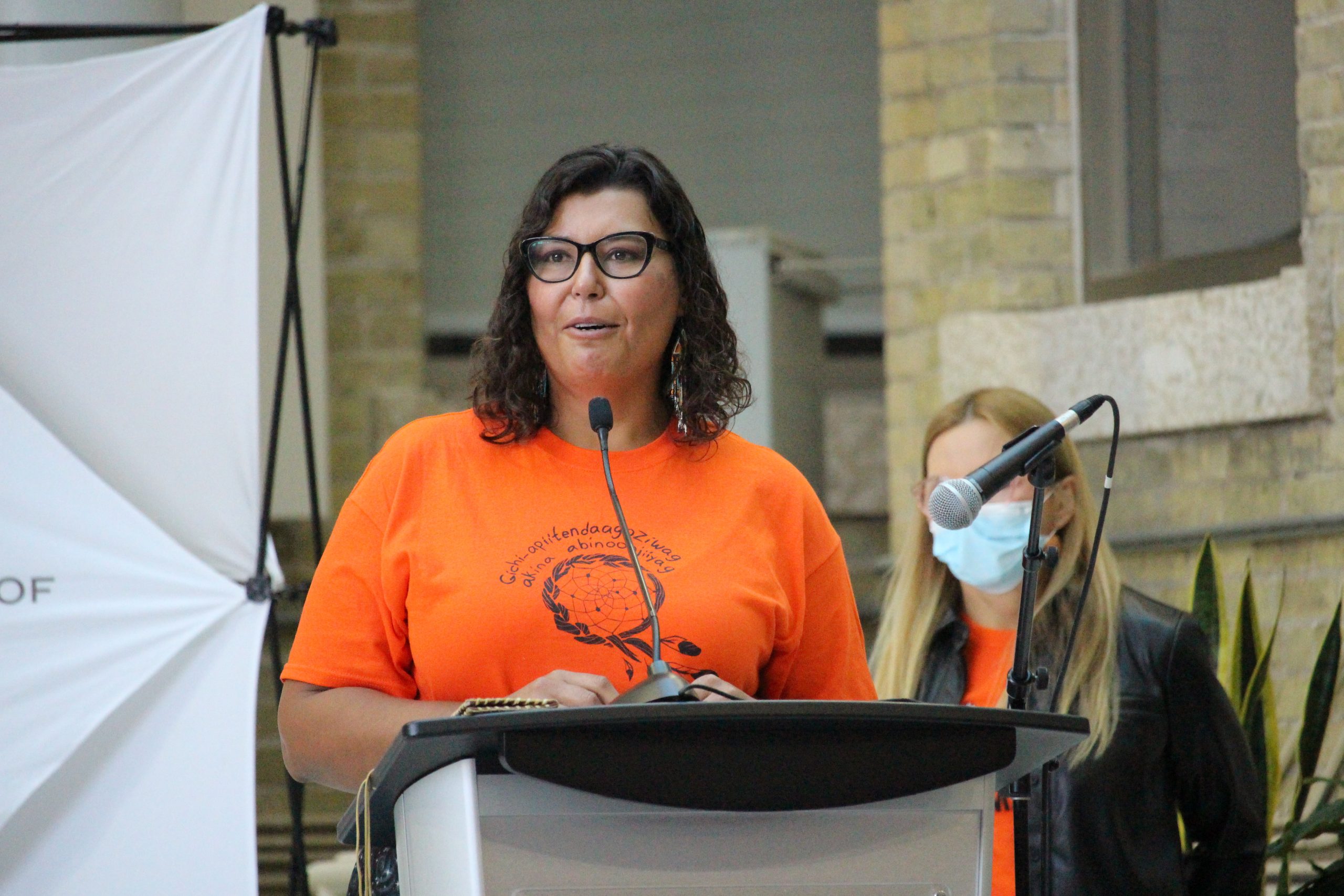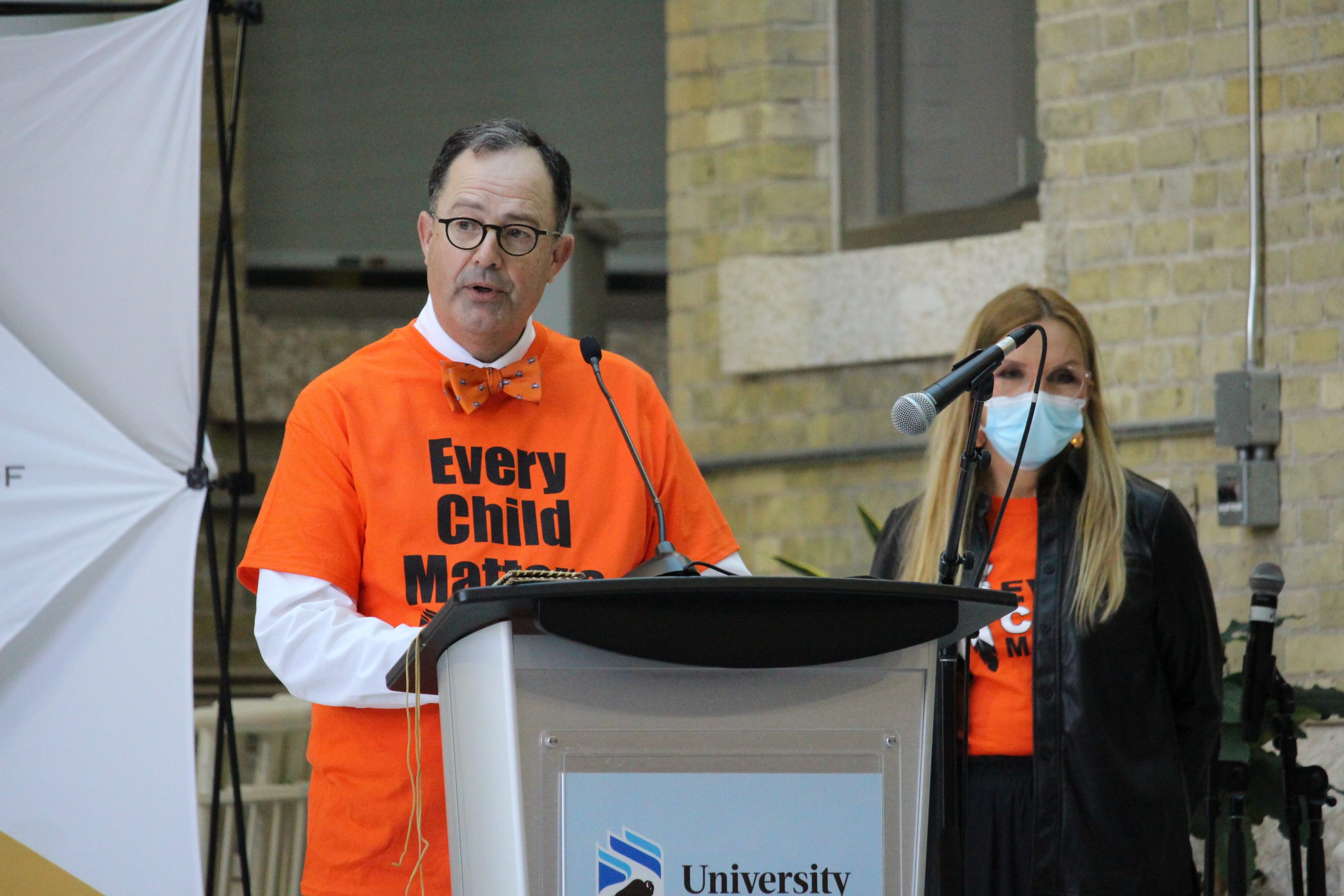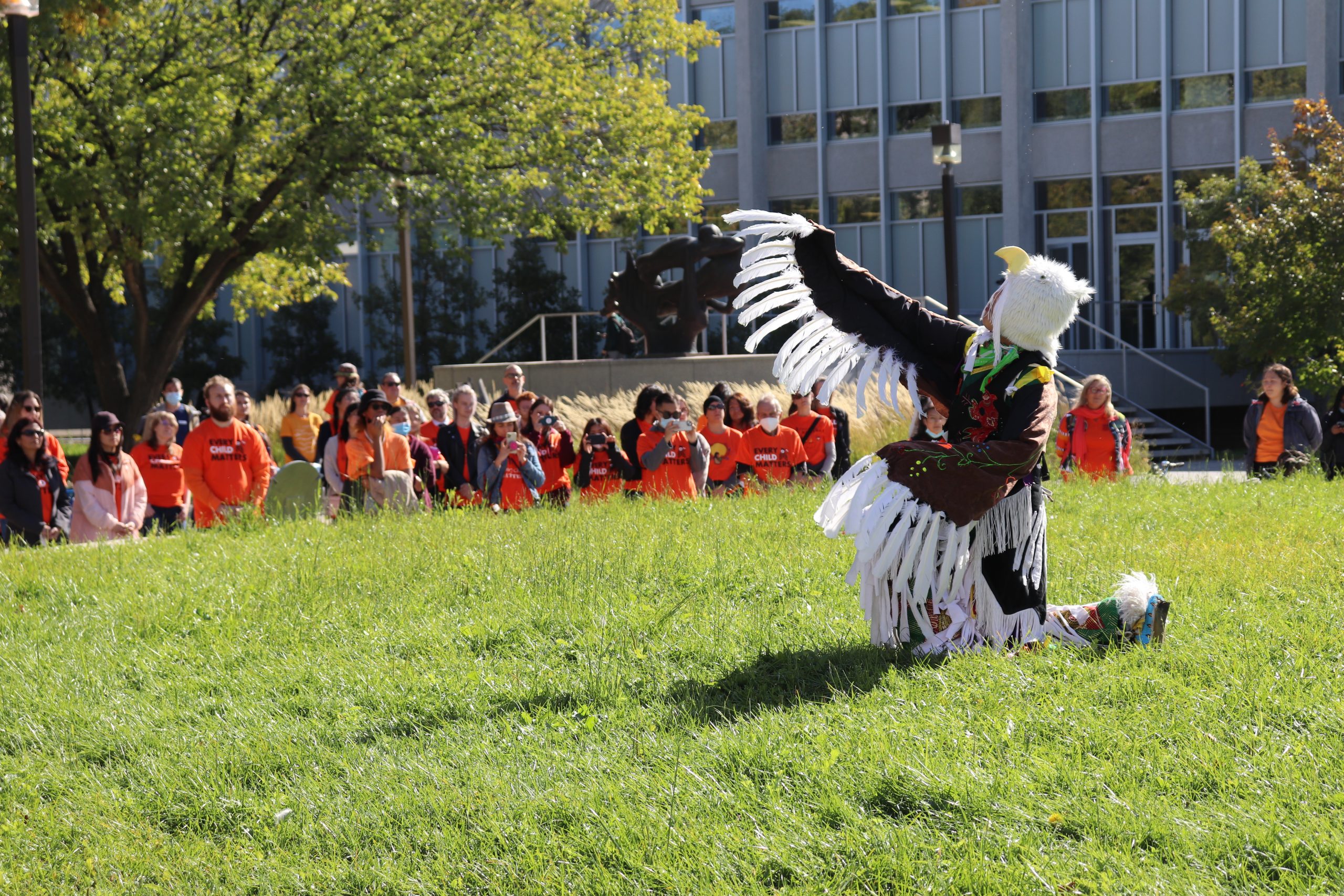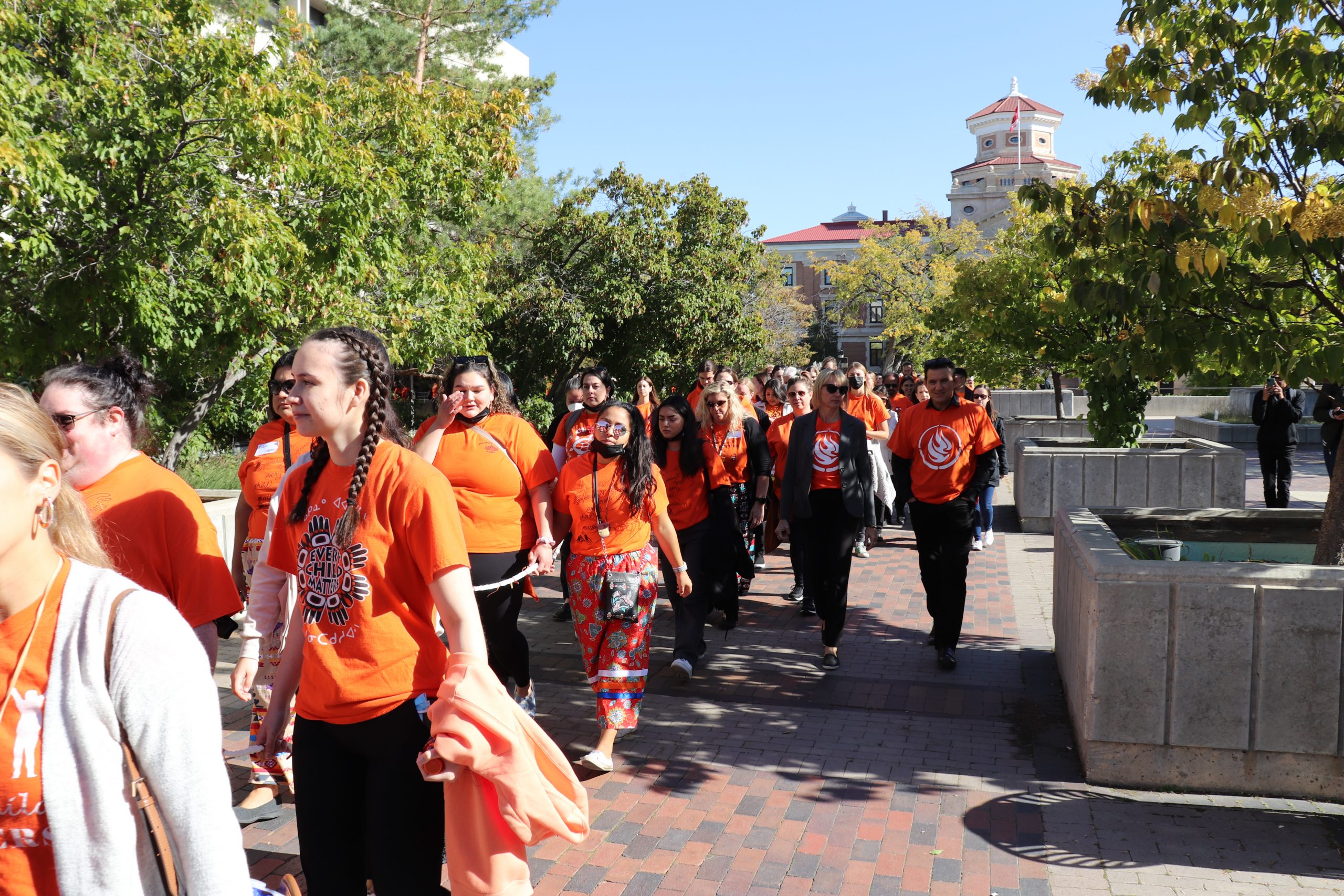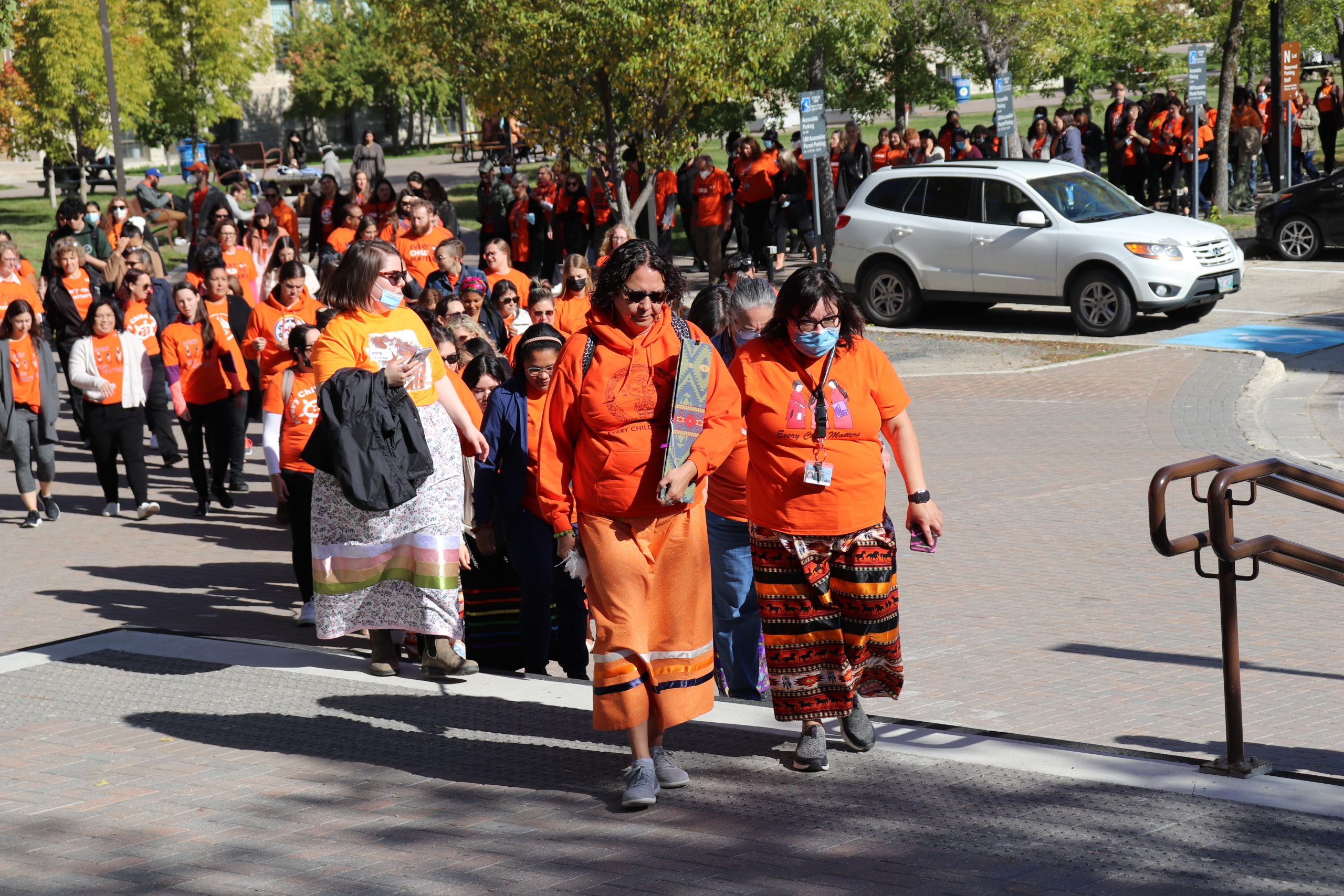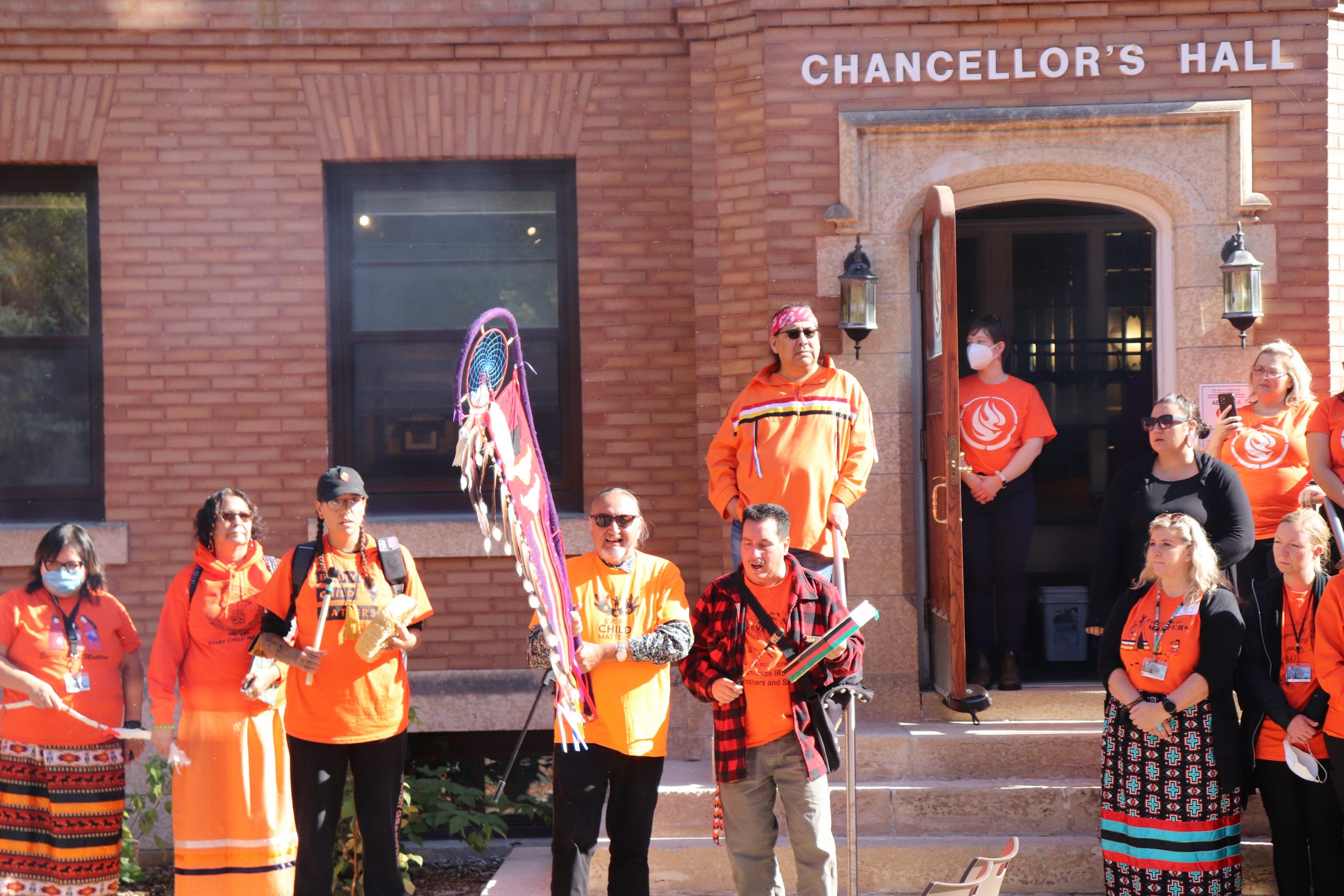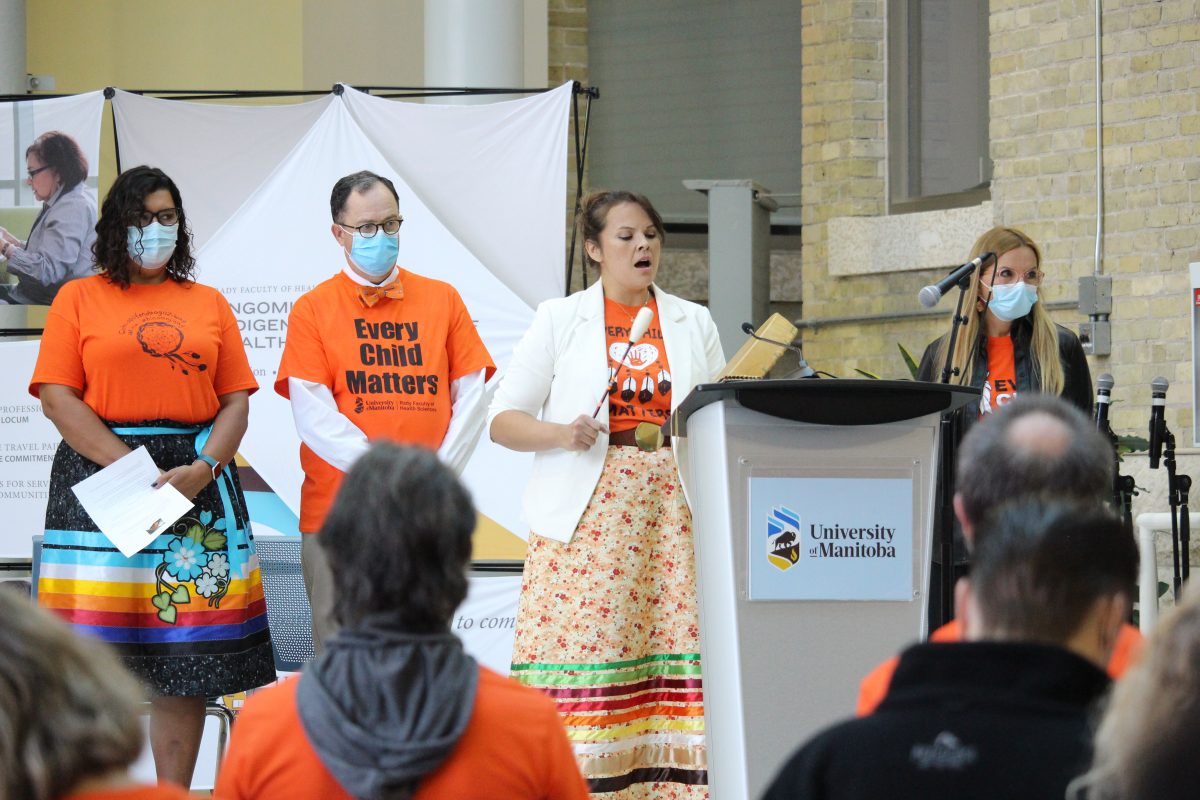
Dr. Lisa Monkman performed the Honour Song at the Brodie Centre atrium, alongside Dr. Marcia Anderson, Dr. Peter Nickerson and Debra Beach Ducharme.
Rady Faculty community marks National Day for Truth and Reconciliation
Hundreds of people from the Rady Faculty of Health Sciences community – and from across UM campuses – wore orange shirts on Sept. 29 and participated in events to mark the National Day for Truth and Reconciliation.
Faculty, staff and students filled the Brodie Centre atrium on the Bannatyne campus for an event organized by Ongomiizwin – Indigenous Institute of Health and Healing to recognize the legacy of the Canadian Indian Residential School System, and honour the children who didn’t make it home and the thousands of survivors of residential schools.
Debra Beach Ducharme, director of Indigenous health integration, Ongomiizwin – Education, hosted the morning. Elder Dr. Margaret Lavallee, Elder-in-residence at Ongomiizwin, gave the opening prayer, and Dr. Lisa Monkman performed the Honour Song and Travelling Song.
“Today, we thank Ongomiizwin, the Indigenous Institute of Health and Healing in the Rady Faculty of Health Sciences, for bringing us together to share our profound sadness about the wrongs of the past, and our sincere hope for a better future,” said Dr. Peter Nickerson, vice-provost (health sciences) and dean, Rady Faculty of Health Sciences, in opening remarks.
Elder Dr. Albert McLeod, a human rights activist and consultant, spoke about the importance and meaning of Indigenous ceremonies, and recognized the specific challenges of 2SLGBTQIAA survivors of the Indian Residential Schools. Dr. Diana Craig, a first-year UM emergency medicine resident, spoke about finding her Indigenous community and mentors who helped her to achieve her goals.
A stunning, large-scale mural by Anishinaabe woodlands artist Blake Angeconeb was unveiled behind the stage in the Brodie Centre atrium. Angeconeb drew inspiration for the artwork from Indigenous youth perspectives on how they’re taking flight together to attain their education and employment goals.
“I’m super happy with it,” Angeconeb said in an interview prior to the event. “I’m excited it’s in such a place like this too, at the University of Manitoba.”
Dr. Marcia Anderson, vice-dean, Indigenous health, social justice and anti-racism, told the audience that they had a few options for where the mural could have been located on the Bannatyne campus, but the Brodie Centre atrium represents the heart of the faculty.
“The university has always been described as having three pillars – research, education and service, but in the spirit of reconciliation, of a renewed relationship of recognizing this institution’s place on our homelands, we really need to understand that the heart of what we do – our foundation is Indigenous lands, relationships with Indigenous peoples, incorporation of Indigenous languages and of health and healing too. So that is why we chose this location,” Anderson said.
The mural was commissioned by EleV, a Mastercard Foundation program, in partnership with the University of Manitoba.
Fort Garry campus
Hundreds of orange-clad students, faculty and staff attended the annual Orange Shirt Day walk presented by the Nursing Students’ Association (NSA) and College of Nursing.
The annual 20-minute walk made its way from the Helen Glass Centre for Nursing to the National Centre for Truth and Reconciliation, where Vivian Umeohabike, senior stick of the NSA recited the nursing students’ pledge to practice culturally-safe care.
“In nursing, we talk about providing care that is holistic and culturally safe. We must be cognizant of the experiences of Indigenous peoples, and how the residential school system has impacted and continues to affect them to this day,” Umeohabike said.
The event began with a ceremony hosted by Deanna Garand, a student in the Mahkwa omushki kiim: Pathway to Indigenous Nursing Education (PINE) program. There was an opening prayer from Brenda Longclaws, Knowledge Keeper for the College of Nursing, and speakers included UM President and Vice-Chancellor Dr. Michael Benarroch, Associate Vice-President (Indigenous) Scholarship, Research and Curriculum Dr. Cary Miller, and third-year nursing student Kristen Pratt, who delivered the story of Phyllis Webstad that inspired Orange Shirt Day.
Webstad was a residential school survivor who had her new orange shirt taken away on her first day of school in Williams Lake, B.C.
“It was taken from her and her feelings were discarded, just like the other children who attended the schools. We wear orange to represent the children who didn’t make it home as well as the survivors. We are their voices, and the future voices are our children, who will carry on their memory,” Pratt said.
The event concluded with remarks from College of Nursing dean Netha Dyck and PINE director Rhonda Campbell and a moving performance by the Aboriginal School of Dance.







